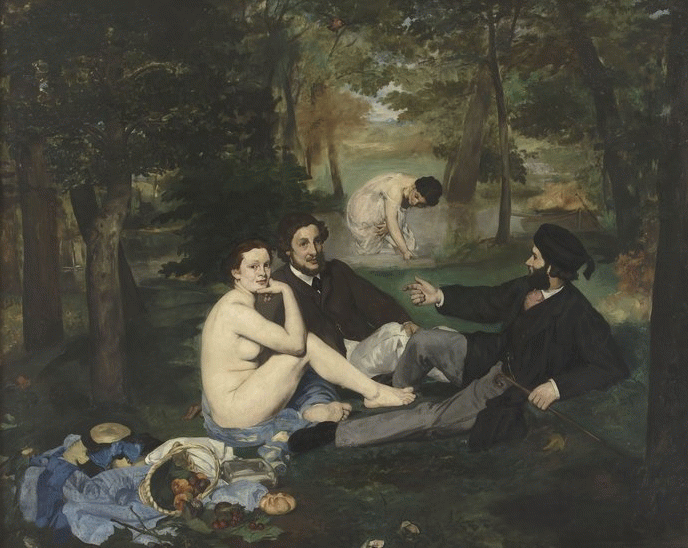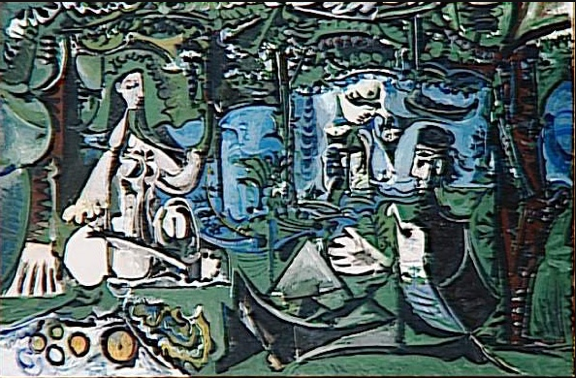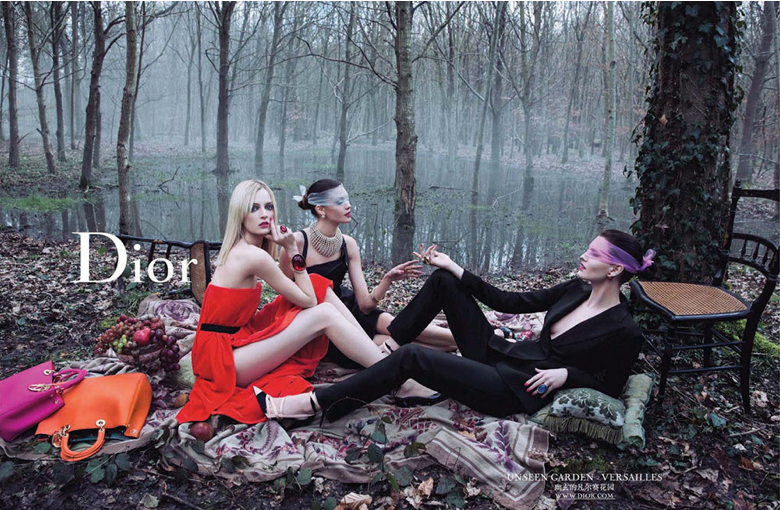I inaugurate this endeavor with a note on the artist who, in my humble opinion, revolutionized our ideas of art. Or, rather, what art can be.
The renegade Edouard Manet: a classically trained painter who used the Academic modus operandi to then challenge its very authority. His paintings are not only beautifully rendered; they represent a crucial turning point in art history. My passion for contemporary art begins with Manet’s Le dejeuner sur l’herbe, 1863. Actually, I adore everything Manet painted but if I must pick a favorite it is certainly this iconic luncheon on the grass; an image that had the power to shock, question, contradict, and transfix. Le dejeuner sur l’herbe was rejected from the Salon in 1863 as the jury found that a nude figure within a landscape (brazenly gazing straight at them!) was much too scandalous. Now, the work hangs with pride in the galleries of the Musée D’Orsay in Paris and appears in every art history textbook.
Manet was one of the greatest rule-breakers contemporary art has known. His paintings weren’t about history or allegory or portraiture or landscape; they were about painting. He blurred the lines between the Academic hierarchies and focused on light, color, form. Because of him, Impressionism happened. Expressionism happened. Dada happened. Marcel Duchamp set a urinal atop a pedestal. Everything changed in terms of what it meant to be an artist.
Le dejeuner sur l’herbe continues to act as a source of inspiration for contemporary artists, from painters and photographers to fashion editorial campaigns. Here’s a look at just a few:
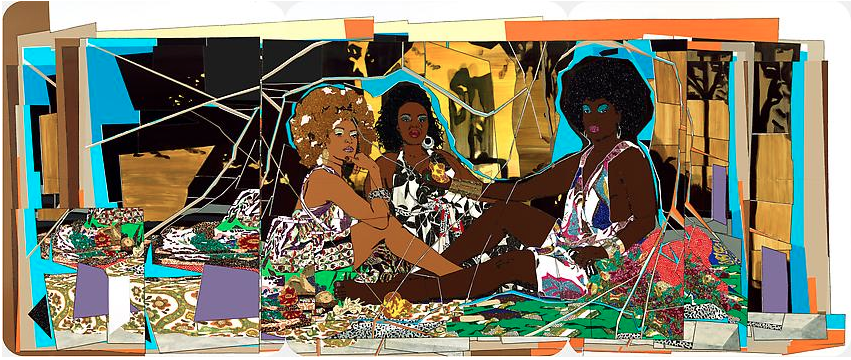
Mickalene Thomas le dejeuner sur l’herbe: Les Trois Femmes Noires, 2010, rhinestone, acrylic and enamel on panel, Lehmann Maupin
I love Mickalene Thomas’ work. Her paintings are inflected with art historical reference and notions of femininity and beauty in contemporary culture. Quite fitting, then, that she takes Manet’s pivotal appropriation of the classic nude as her point of reference. Thomas’ Les Trois Femmes Noires, 2010, is a fabulous rhinestone-bedazzled take on the original.
Picasso created a series of works in the ’60s influenced by Manet’s seminal painting. Working within the Cubist framework, Picasso takes Manet’s image and fractures the elements in his efforts to flatten the pictorial space and focus on the color and form.
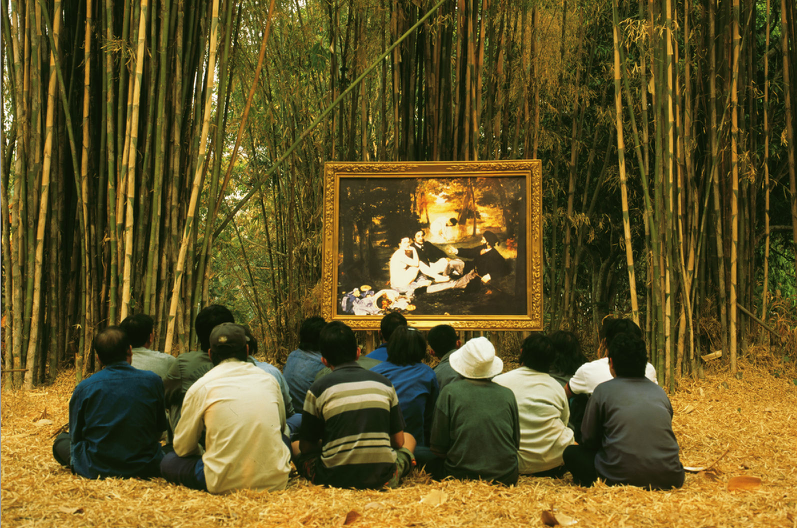
Araya Rasdjarmrearnsook Two Planets: Manet’s Luncheon on the Grass and the Thai Villagers, 2008, video, Tyler Rollins Fine Art
This video by Araya Rasdjarmrearnsook films rural Thai villagers looking at a reproduction of Manet’s painting and discussing what they see. The villagers’ responses to the work are pure and honest, especially given that they have no prior context of the work or the artist or art history.
Oh, Dior. So very lovely. I always get excited when art & fashion collide. This shot is a beautiful still from Dior’s 2013 fall-winter ad campaign in which the models arrange themselves into Manet’s tableaux.
__________________________________________________________________________________________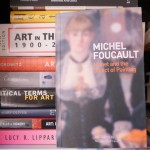 Art historians, theorists, and novelists have penned many more thoughts and interpretations on Manet than I can list here today. However, one of my favorite pieces of analysis comes from a lecture given by philosopher Michel Foucault (with a wonderful introduction written by critic Nicolas Bourriaud) titled Manet and the Object of Painting.
Art historians, theorists, and novelists have penned many more thoughts and interpretations on Manet than I can list here today. However, one of my favorite pieces of analysis comes from a lecture given by philosopher Michel Foucault (with a wonderful introduction written by critic Nicolas Bourriaud) titled Manet and the Object of Painting.
